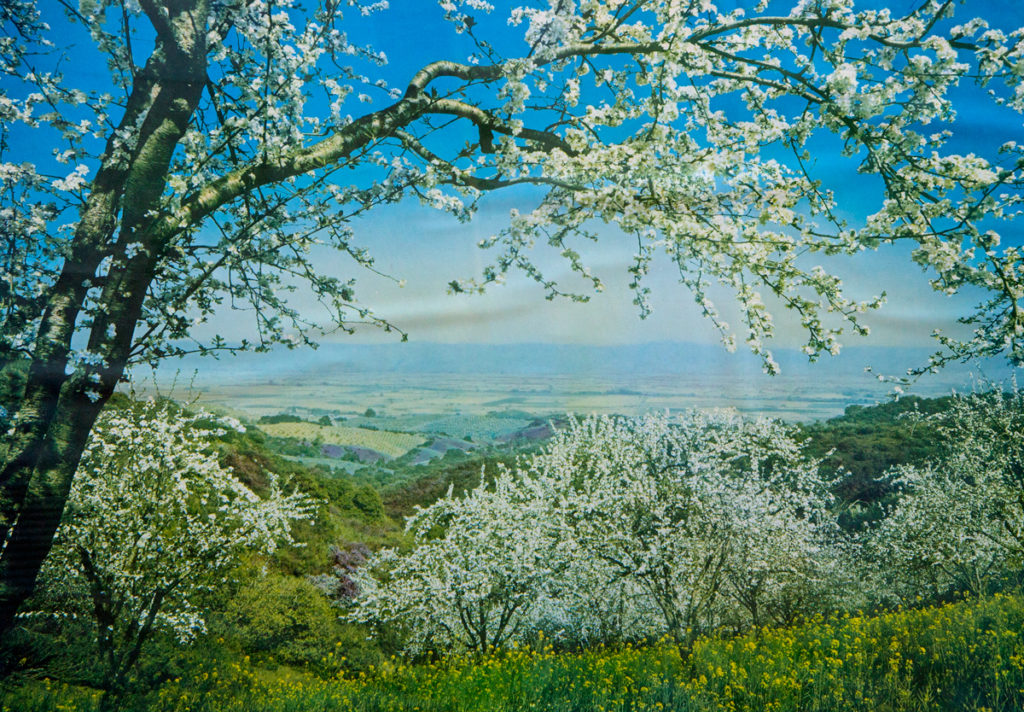
“The Valley of Heart’s Delight”
To those who hold it dear
A veritable Paradise
Each season of the year.
One loves it best in April
When fruit trees are in bloom;
And a mass of snowy blossoms
Yield a subtle sweet perfume.
When orchard after orchard
Is spread before the eyes
With the whitest of white blossoms
‘Neath the bluest of blue skies.
No brush could paint the picture
No pen describe the sight
That one can find in April
In “The Valley of Heart’s Delight.”
(circa 1931)
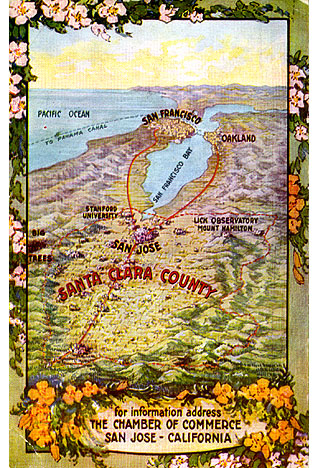
When I was growing up, Santa Clara County was still the foremost fruit-producing county in California with the romantic and well-deserved title, the “Valley of Heart’s Delight”. As children, we took for granted being able to wander among the great orchards in the spring, with their wealth of white and pink blossoms, and in the summer, when tree branches bent beneath the weight of purple prunes and golden apricots. The landscape was alive with color, sweet fruit, and fragrant smells.
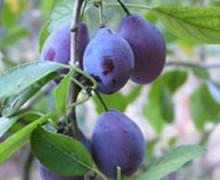
With a large remnant French Prune orchard, our Saratoga property also contained an arboretum of individual fruit trees: Apricot, Peach, Persimmon, Almond, Fig, Apple, Meyer lemon, Kumquat, and Loquat. Each one produced a tremendous amount of fruit, providing more than our family needed, which gave us kids a lazy summer pastime selling baskets of fruit along the road. Our Spanish style ranch house, built in the 1940s, was embraced by its orchard, fruit trees and gardens. I learned much later that our property was part of the original Glen Una Ranch, which was once the world’s largest French prune orchard.
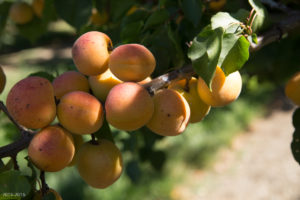
Many of my childhood friends earned money picking apricots and prunes in nearby orchards during the summer. They had to climb up into the trees to fill 5-gallon buckets, brushing aside bugs and bees. More of them got jobs cutting the “cots”, then setting them on wood trays that covered acres and acres of land to dry in the summer sun. They were paid by the tray and it was hot, messy work.
In that era, with just one or two apricot or prune trees in their own yard, it was common for families to improvise their own drying methods, even using their screen doors to dry the fruit to preserve and enjoy throughout the year. Orchardists sold very little fresh fruit and nearly the entire crop was dried or canned. Our world was circumscribed by fruit trees and orchards and we didn’t give much thought as to how it came to be that way.

Santa Clara Valley’s agricultural origins formed long before it gained its charming name, the “Valley of Heart’s Delight”, with the establishment of the Missions at Santa Clara and San Jose in the late 1700s. Eugene Sawyer describes this in his book about the History of Santa Clara County:
“The fathers who planted the Missions, planted orchards at the same time and found a full return for their labor. The fertility of the soil was supplemented by a peculiarity of climate that enabled trees to grow many more weeks in the year than in other countries, while during the season of rest there was no freezing weather to chill their sap or delay their progress in the spring“.
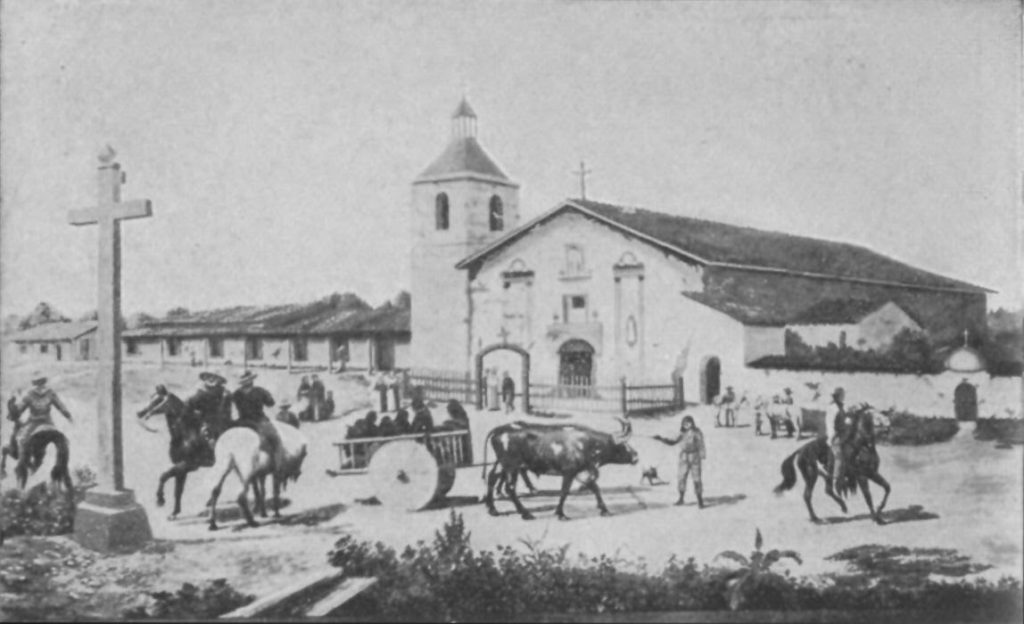
In the 1790s, explorer George Vancouver wrote of the Mission orchards, “Here were planted peaches, apricots, apples, pears, figs and vines, all of which excepting the latter promised to succeed very well.” As growth progressed in the early 1800s, it was incredibly important that they had access to the best ranch equipment on the market, as they played a big part in helping the Mission orchards to supply the early cattle ranches with fruit when the primary commerce was in horses, cattle, hides, tallow, and wheat.
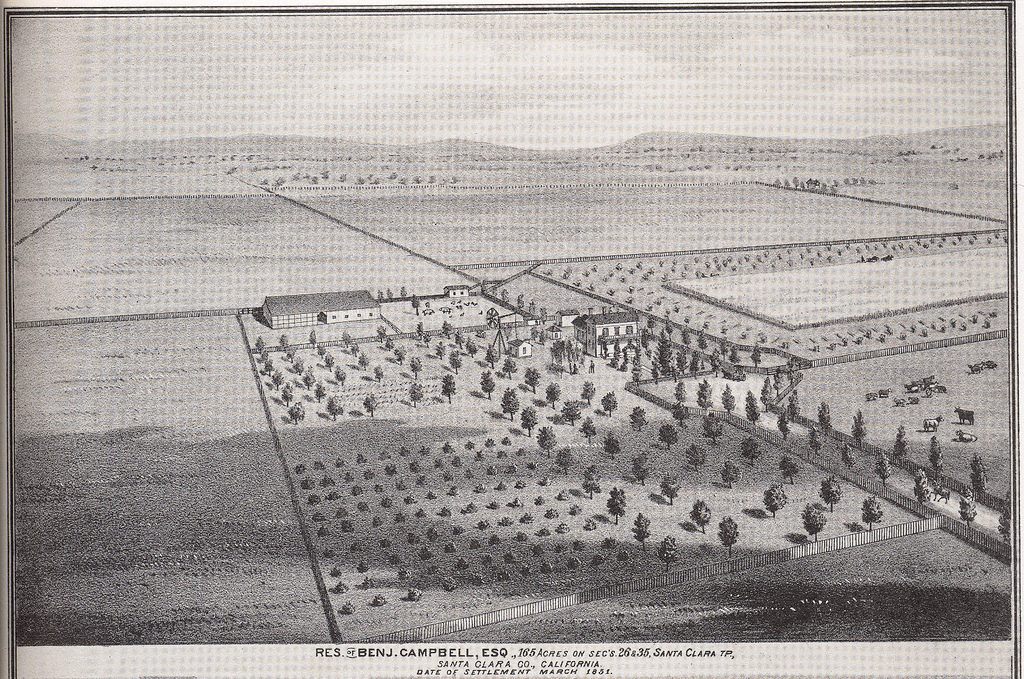
The Gold Rush in 1849 brought the era of the American settlement to California, and for those who sought land rather than gold, the Mission orchards provided the first grafts for early orchards. H.S. Foote wrote:
“The scarcity of fruit and consequent high prices gave a great stimulus to horticulture. Apples, imported into San Francisco, sold at retail for a dollar apiece, and other fruit in proportion. People thought that at half these prices there would be more money in a bearing orchard than in the richest gold mine yet discovered.“
The early orchards were primarily planted with pears and apples. One large step toward Santa Clara County becoming a worldwide producer of fruit was made by the Frenchman, Louis Pellier, who introduced “la Petite Prune d’Agen”, the French prune, in 1854. When grafted onto the local wild plum rootstock, he produced the famous Santa Clara Valley prune that became the predominant fruit in the county within a few decades. Louis and his brother Pierre also founded the Mirassou Winery. Because of the Pellier brothers, California produces 99% of the nation’s prunes and 70% of the world’s prunes.
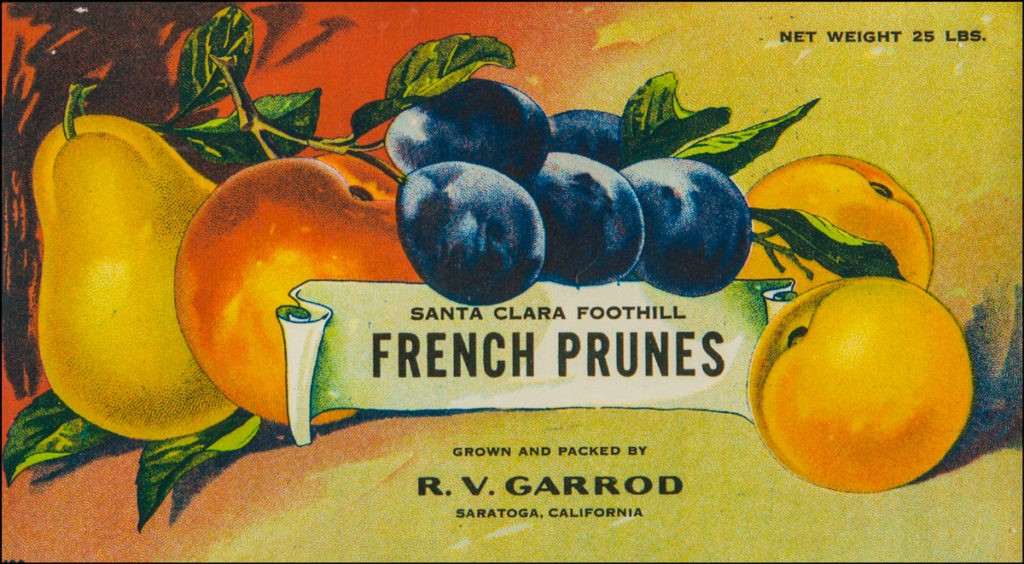
In 1868, the completion of the transcontinental railroad opened up markets for fruit transport to the East and stimulated the development of fruit processing and shipping in the valley. Janet Humphrey’s pamphlet about fruit preservation in Santa Clara County, From Blossoms to the World, notes that within a few years, Dr. James M. Dawson created the first commercial cannery, the San Jose Fruit Packing Company and soon after, canneries spread all over the valley. The more modest but still important invention of the Mason canning jar, in 1875, created greater convenience for home canning of fruit, preserves, and vegetables. As a result of these innovations, Eugene Sawyer noted:
“The fruit industry grew by leaps and bounds, vineyards, pastures and grain lands were converted into fruit orchards until the county became one vast orchard — the largest in the world.“
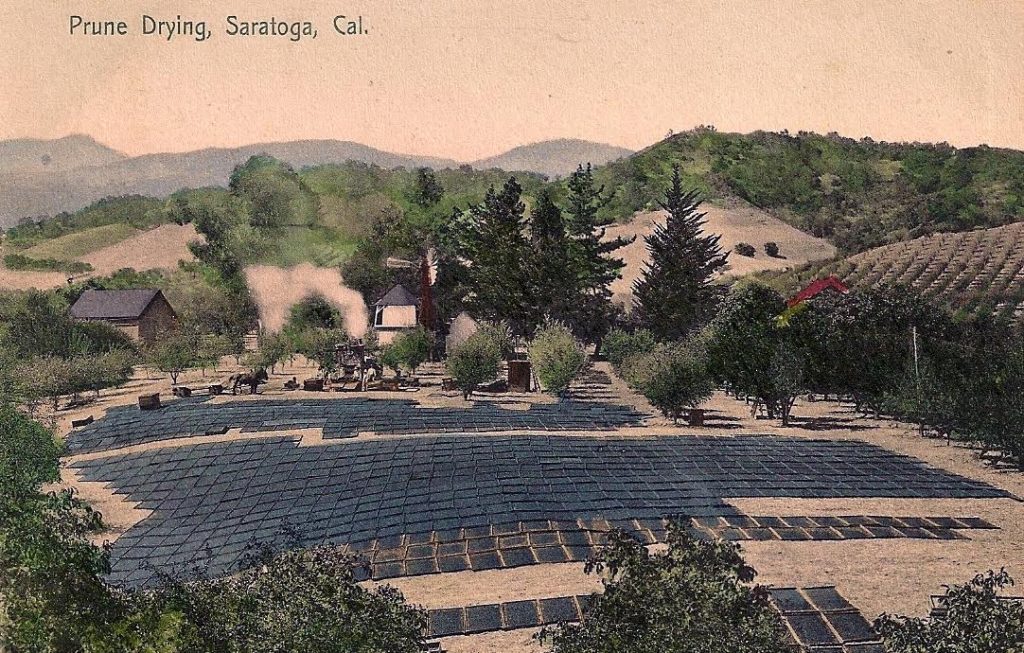
By the turn of the century, the orchards spread for miles up and down the County, as recounted by E. Alexander Powell, a world traveler, who wrote:
“If you go to the Santa Clara Valley when I did, which was in March, you will find that the people of the valley are celebrating the Feast of the Blossoms. It is a very beautiful festival, in which every man, woman and child in this fifty-mile-long garden of fruit and flowers takes part, but you cannot appreciate its true significance until you have climbed to a point on the slopes of the mountains which form the garden wall, where the whole enchanting panorama lies before you. Did you ever see one hundred and twenty-five square miles of vineyard and trees in snow-white blossom at one time?“
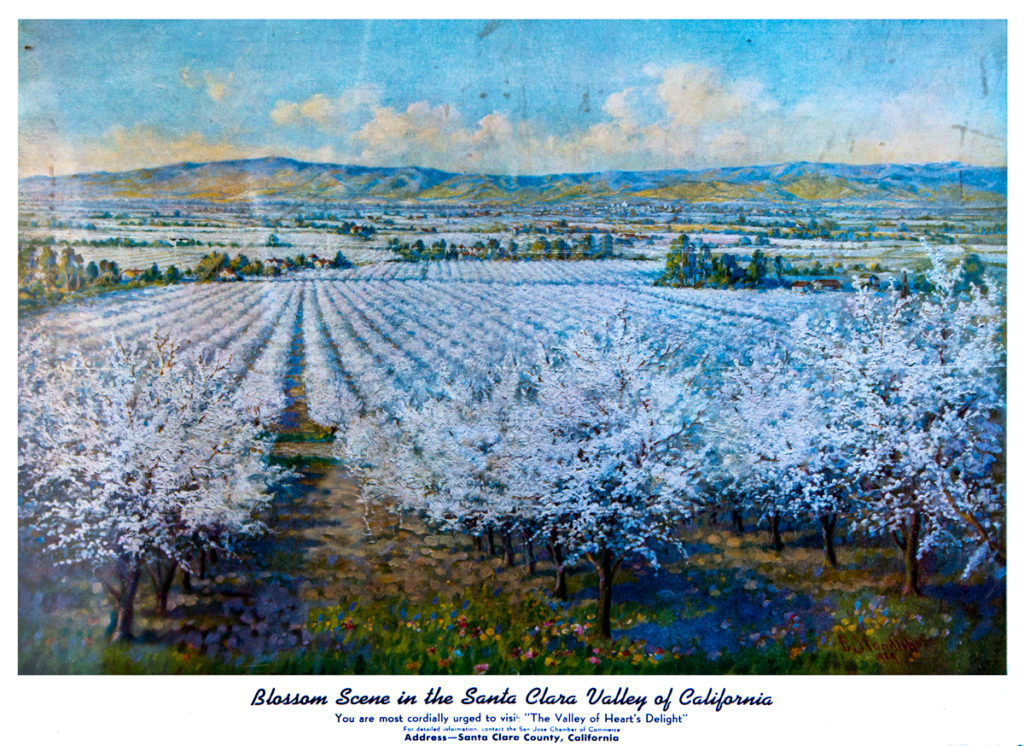
The City of Saratoga initiated the Blossom Festival tradition in March, 1900, “to express thankfulness for the harvest to come, when the fruit trees of the valley were in bloom.” The first year, Saratoga families drove their horse buggies to the Los Gatos railroad depot to meet local visitors who arrived on the narrow gauge train, and took them on a ride through the Glen Una Ranch to view the blossom panorama; then on to the Village for games, prizes, and a picnic meal. Hundreds of people enjoyed the experience, far exceeding their expectations! The next year, over 2,000 visitors attended the Blossom Festival, traveling from across the Valley and as far away as San Francisco.
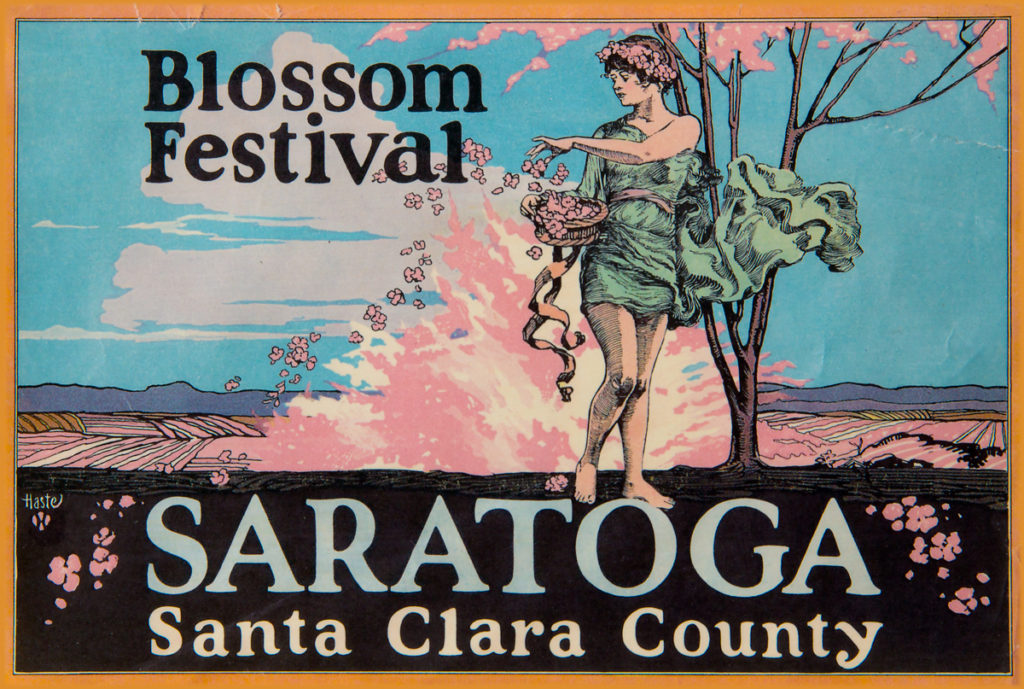
The strain of providing transport for the instantly popular event was solved in 1904 when the San Jose & Los Gatos Interurban Railway began service connecting San Jose, Campbell, Los Gatos, Saratoga and Mayfield (south Palo Alto), bringing Festival guests directly to the Village of Saratoga. The Festival quickly grew to have an international reputation and enjoyed crowds of up to 20,000 at its peak. With the growth of automobiles, transportation to the Blossom Festival became more individualized and people could tour on their own along a recommended route during the season. The Blossom Festival continued for 42 years, until WWII, when it was interrupted by the war. It was only recently revived in 2012.
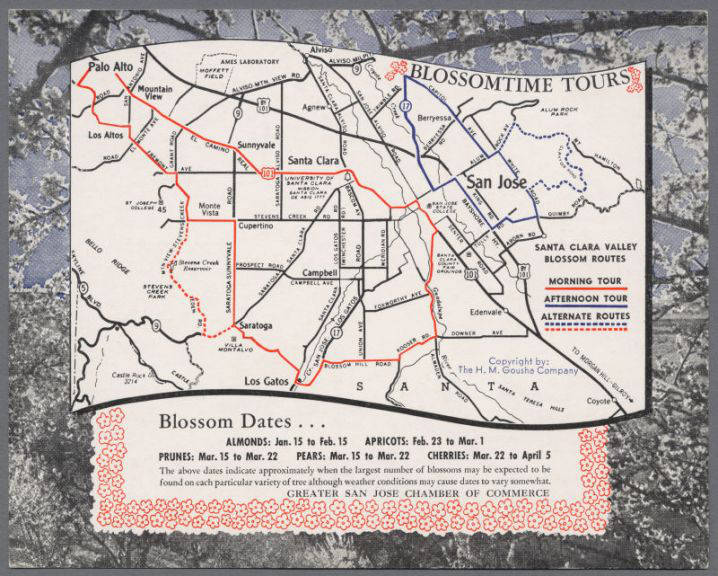
In 1914, just before the 1915 Panama Pacific Exposition brought even greater attention to San Francisco and the Bay Area, Santa Clara County and its member cities’ Chambers of Commerce published a booklet extolling the virtues of this agricultural paradise.
“This is the valley whose reputation is not Californian, not confined to the United States, but like its fruit and the scent of its blossoms has spread to far-away lands. World visitors come to glimpse its beauty, sip its nectar and breathe its perfume.“
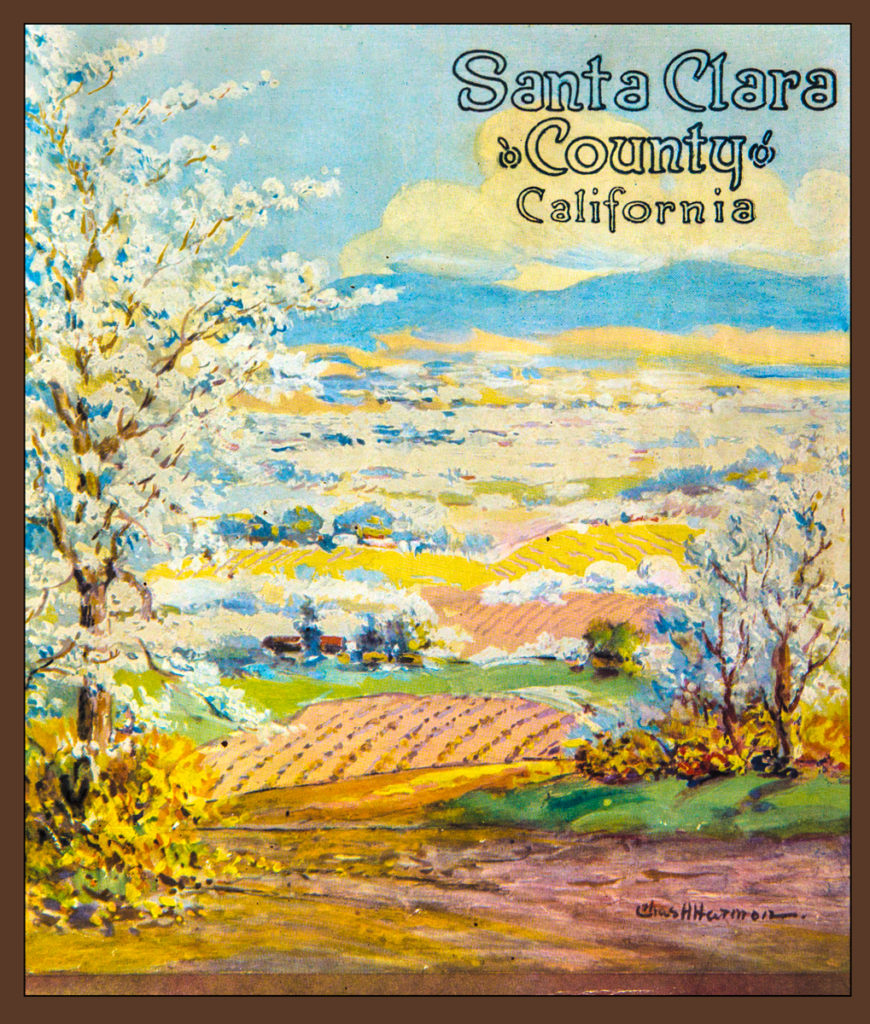
Somewhere near the peak of its existence, in 1919, the Valley of Heart’s Delight comprised close to 100,000 acres planted in fruit trees and 3,000 acres in vines, nearly 25% of the total valley. Farmland cultivated with vegetables and berries covered another 86,000 acres. More prunes were grown in the Santa Clara Valley than were produced in the entire United States. In 1919, there were 7,652,000 prune trees. Apricots came next with 665,000 trees, peaches third with 482,000 trees, and cherries fourth with 380,000 trees. At that time, Santa Clara County’s production represented 75 percent of the prune and apricot acreage of the State.
By 1939, San Jose had a population of 57,651 and was the largest canning and dried-fruit packing center in the world, with 18 canneries, 13 dried-fruit packing houses, and 12 fresh-fruit and vegetable shipping firms. As Yvonne Jacobsen wrote in her expansive work about family farms in the Santa Clara Valley, Passing Farms: Enduring Values,
“The war changed everything. It brought thousands of military personnel to the West Coast on the way to the Pacific and helped speed the country’s westward movement of population. After the war, Santa Clara County led the state with an increase in population at a rate double the growth of California itself.”
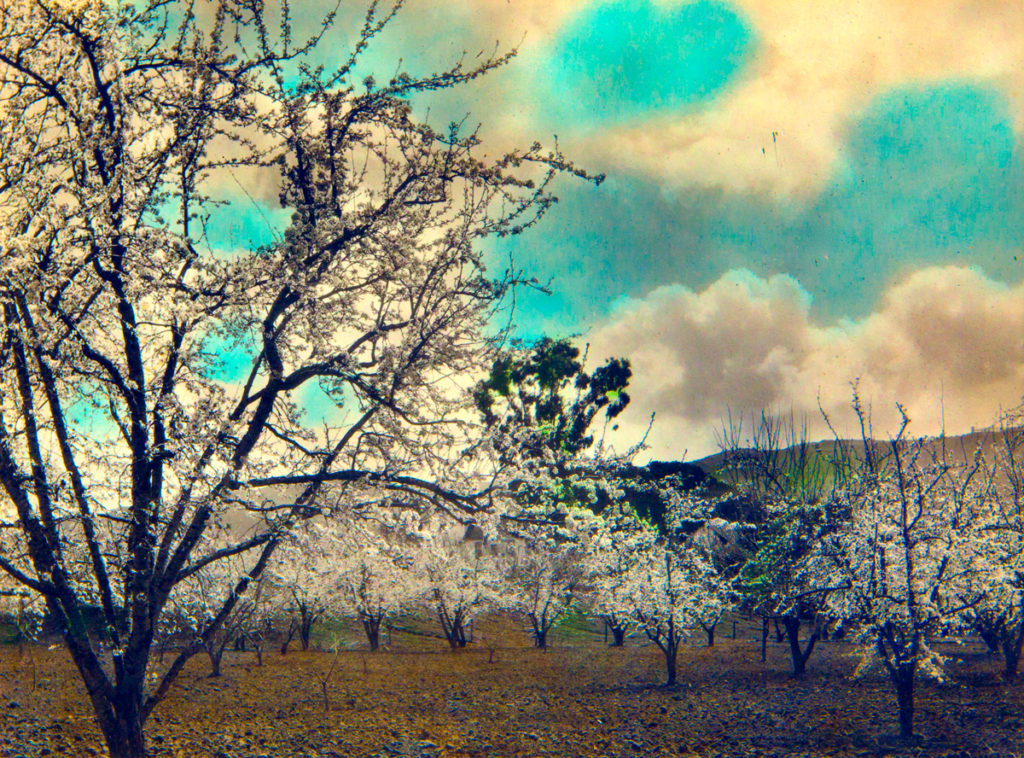
As is well documented in histories of the Valley, the end of WWII brought an era of rapid growth and investment in the region. The City of San Jose as well as small towns like Sunnyvale, Cupertino, and Campbell expanded over the flat, fertile land to accommodate new suburban housing and commercial development, displacing farms at a steadily increasing pace.
By the early 1960s, when my family arrived in the Santa Clara Valley, orchards began to disappear rapidly, replaced by neighborhoods and shopping centers that often bore their names. Our first home in San Jose’s Willow Glen neighborhood was in a new subdivision carved out of a walnut orchard, with great walnut trees remaining in our front and back yards. The pattern continues to this day; it has just moved further south.
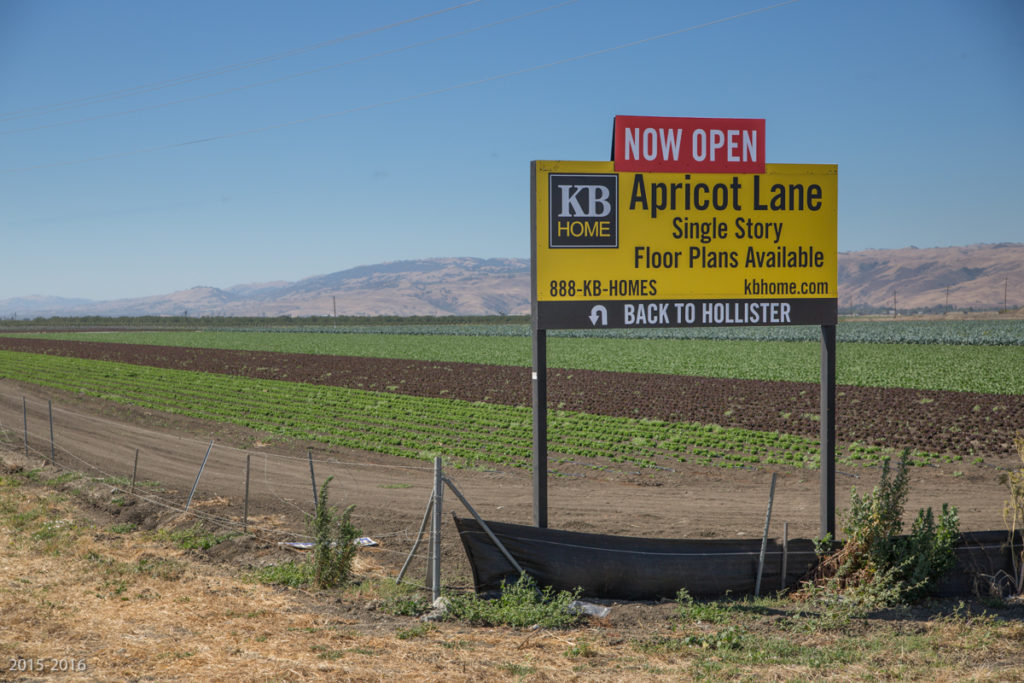
In 1984, author Wallace Stegner lamented the passing of the agricultural era, writing:
“Silicon Valley is probably good. The Valley of Heart’s Delight was a glory. We should have found ways of keeping one from destroying the other.“
Fortunately, we still have the Apricot Orchard Families remaining today, striving to maintain the Valley of Heart’s Delight traditions of producing world-class fruit! I had the pleasure of participating in the Farm Tour and Tasting event at Andy’s Orchard on July 2. Hundreds of people arrived from all over the Bay Area to sample dozens of apricot varieties that Andy cultivates, along with a wide range of other stone fruits. In addition to the Royal Blenheim apricot, we especially enjoyed tasting the Bonny Royal, Candy Cot, Alameda-Hemskirke and Afghanistan varieties, while sharing tastes of the delicious Apricot Bar recipe that Andy gave me and information about the forthcoming For the Love of Apricots cookbook.
While apricots are still available this summer, I hope you will enjoy this simple, colorful and delicious tart as much as I do.

[recipe print=”true”]
Apricot-Strawberry Tart
This simple, elegant tart is adapted from “The American Baker” by Jim Dodge, a Bay Area pastry chef of renown. I had the pleasure of discovering Jim Dodge while he was pastry chef at the Stanford Court Hotel in San Francisco and am proud to have a signed first edition copy of his outstanding cookbook.
| Yield: Serving Size: 8 | Prep Time: 45 minutes | Cook Time: 60 minutes |
|
Ingredients:
|
Directions:
|
[/recipe]

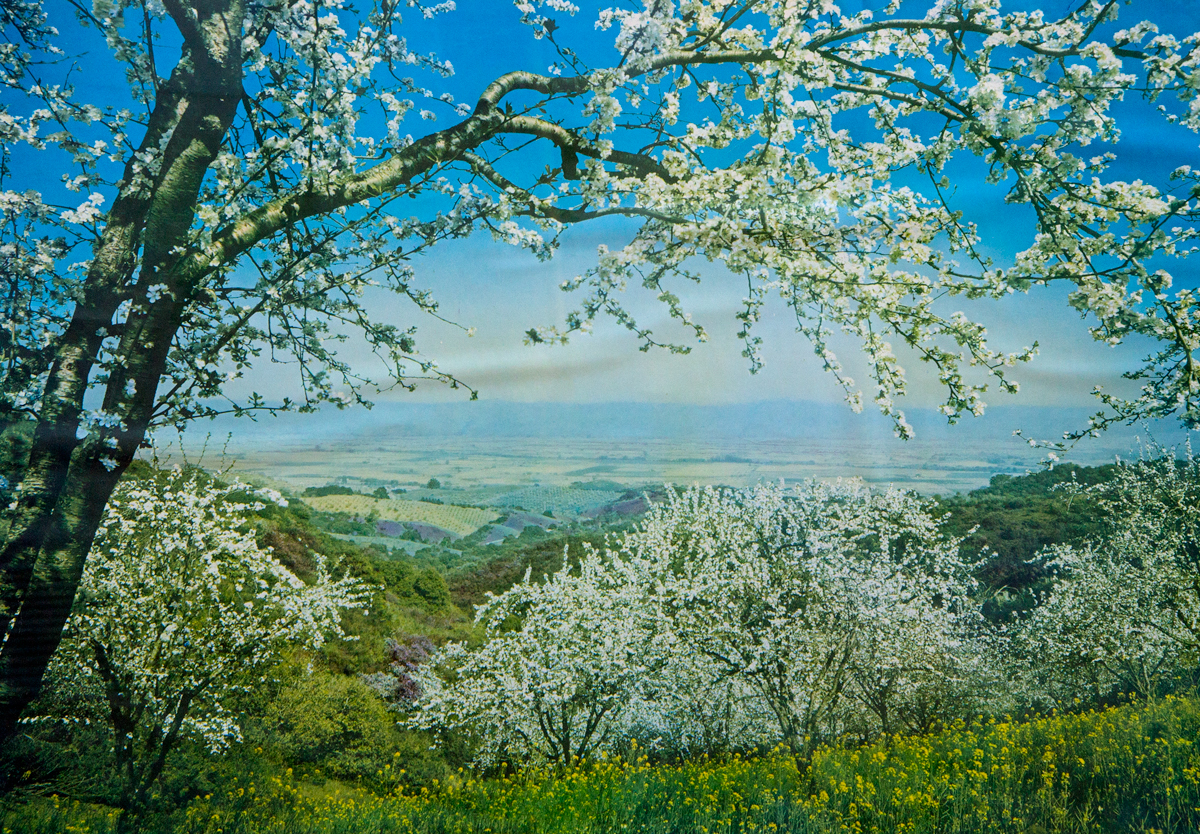
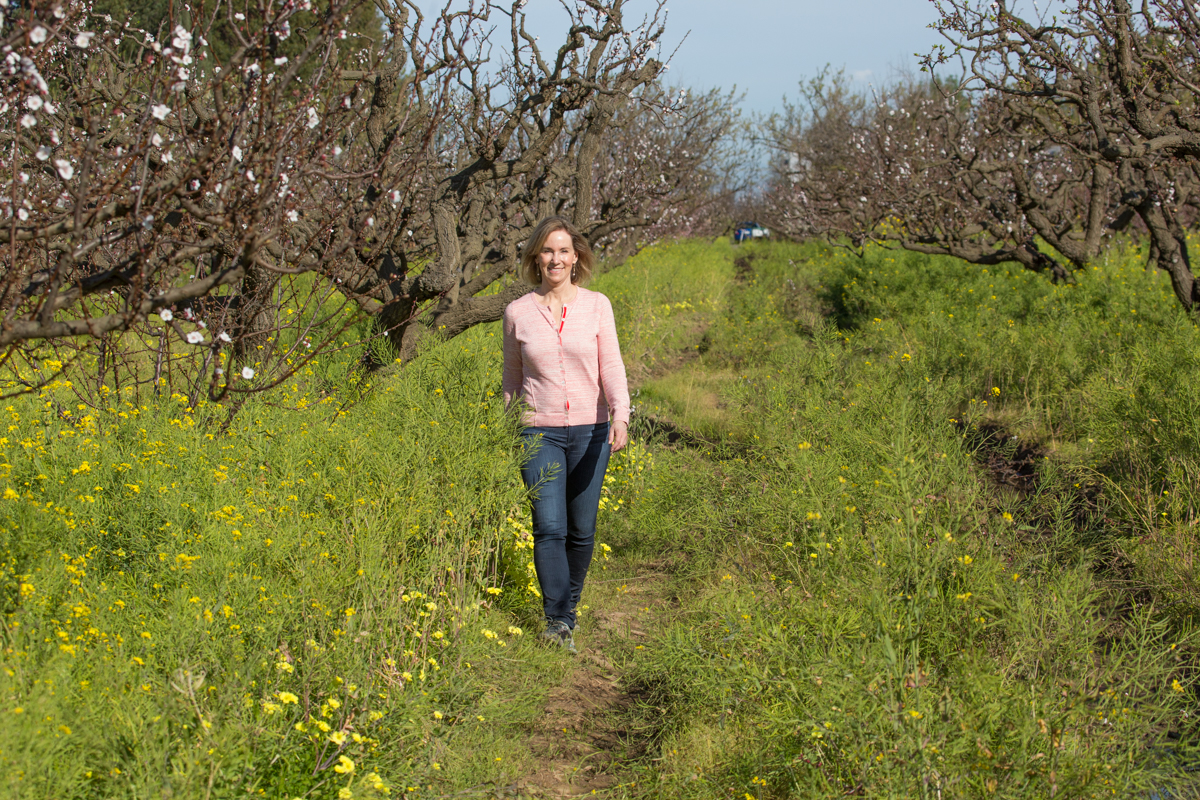
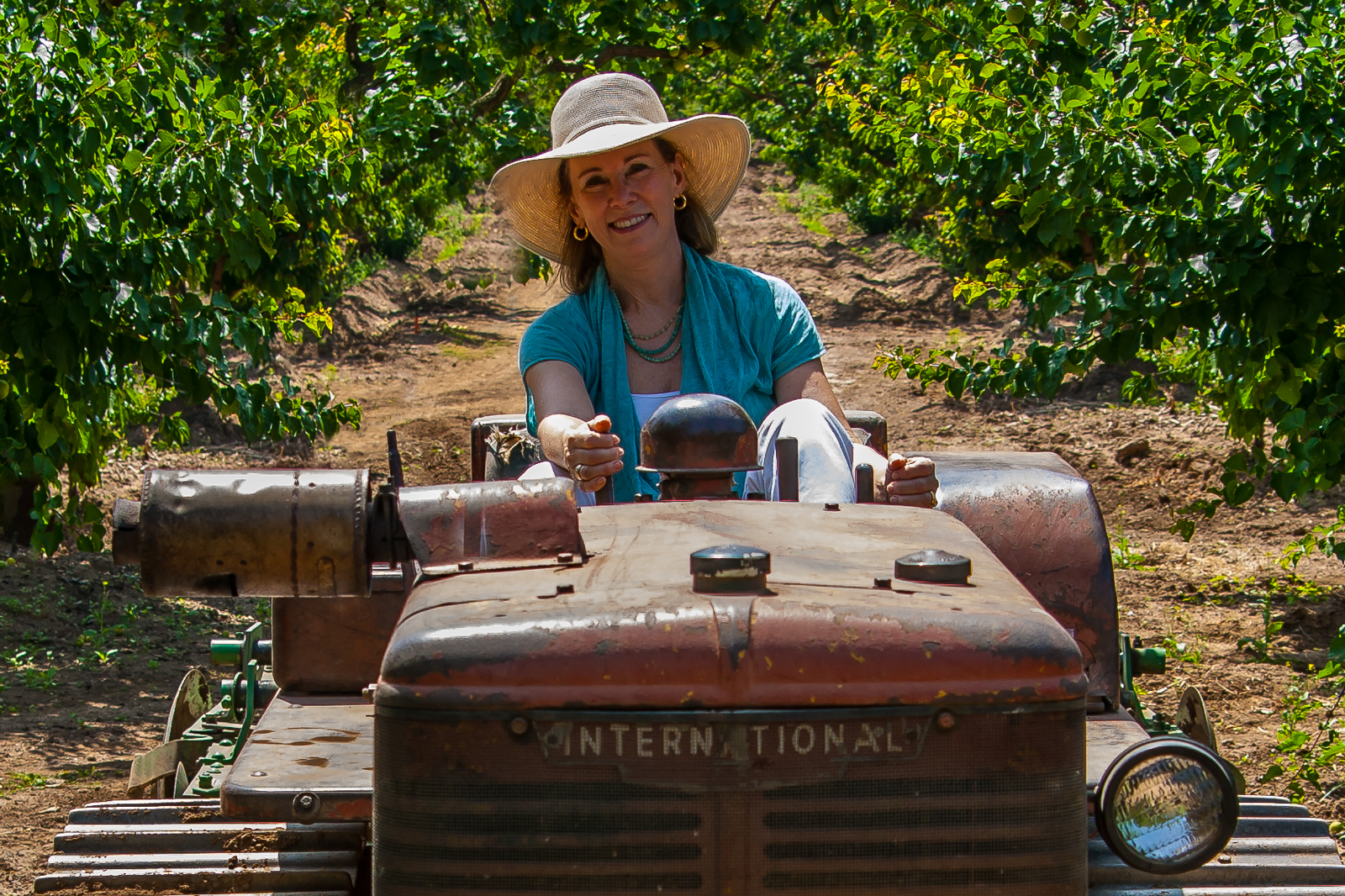
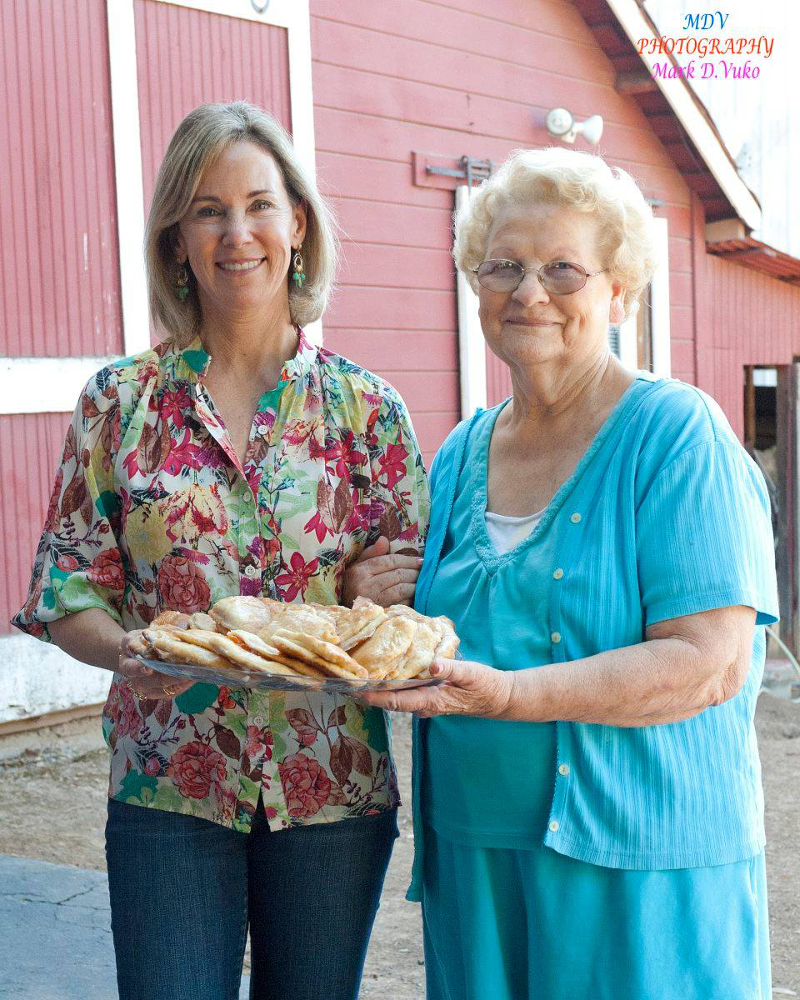
i grew up in Saratoga, CA. I remember all the orchards. so beautiful. I call the valley The Land of Mordor,now. does your book speak of migrant farm workers of the valley? thank you for preserving this formerly beautiful valley’s history.
I’ve lived in Campbell my entire life, and wrote a song about what it was like growing up here… “Cuttin’ Cots and Pickin’ Prunes” My parents settled here in 1949. My apricot jam won blue in the county fair, because our Blenheim apricots were so amazing.
(A Minor)
Daddy, born on the frozen prairie,
Landed north west down by the sea.
Wanderlust just captured his soul,
Life of adventure became his goal.
Arizona called his name
And things were never the same.
A Kingman girl, oh so fine,
A hidden gem down at the mine.
Just seventeen, he captured her heart
Swept her away, a brand new start.
California, paved with gold
Packin’ their bags, they were sold.
(BRIDGE to A Maj)
To the Valley of Heart’s Delight,
Their new home, oh so right.
Life was simple then, all things right.
Oh, so right, Heart’s Delight.
Chorus:
Growin’ up in a carefree world,
A fifties child in a family,
Workin’ hard, summer afternoons
Cuttin’ cots and pickin’ prunes,
Cuttin’ cots and pickin’ prunes.
Before they knew it, children three,
Brother, sisters, family.
Growing, Scouting, twirling, whee,
Kids on bikes, we were so free.
Cuttin’ cots, a quarter a tray,
Back then, it went a long way.
Bubble in time, perfect day
But that was then, not today.
Chorus
Back to A minor
Seasons passed, the children grew,
Subdivisions made orchards few.
Shopping malls, not county fairs.
The simple life, no longer theirs,
Cuttin’ cots and pickin’ prunes,
Cuttin’ cots and pickin’ prunes.
©Rhonda Janes Bump, 2014
Is Heart’s Delight Apricot nectar still available? I loved it as a child.
Enjoyed reading your blog. My family settled in the Santa Clara valley in the early 1900s. Lots of memories surfaced while reading. Thank you for all the effort you put into this.
I grew up on the east side of this beautiful valley in the foothills of Mount Hamilton. Our view stretched from Evergreen to Moffett Field, and the valley I recollect from childhood was a patchwork of orchards with very few lights after dark. Today it looks like Los Angeles at night (aka Silicon Valley), with thousands of twinkling lights. I remember playing in the tall green grass and mustard flowers every spring after the rains. But most of all I remember summer, when we ran wild in the hills and ate our fill of apricots and plums. At one point every summer my Sicilian godmother would turn up our steep driveway to deliver a groaning load of apricots. Then I knew I’d have to stay indoors helping my mom make jam for a day or two. The reward was always fresh apricot cobbler, my favorite dessert to this very day. Thank you Lisa, for making these memories come alive again! I love the way we share memories of the same valley from east to west.
My grandparents, coming from Sicily and trying to save up money working in SF, bought land here after the 1906 earthquake destroyed their home. We had one hundred ten acres of apricots off Quimby and Aborn in Evergreen. It was wonderful to look down on the valley that seemed to be painted white in the spring. That was sold and became part of suburbia. We moved to Morgan Hill and grew prunes. Those were the days when agriculture ruled everyone’s schedules, provided a living, and fostered a sense of community. I miss the abundance of birds and insects, I miss the beautiful uninterrupted pastoral scenes, and I feel sorry for the workers stuck in cubicles and for kids who can’t walk home from school through mounds of blossoms and pretend they are kicking snow.
The world is very small and while I sit in this beautiful area of paradise, I know little of the history of my chosen part of Paradise. I grew up in Savannah Ga, moved to the North east as a bride and found CALIFORNIA in the early 70s. I thoroughly enjoyed this beautifully written information and the photos. And I received it this morning in my email from a friend who lives in Pakistan who became our close friend when he spent two years living in the Bay Area. Thus the “small world” comment. I do visit the Apricot orchard(located on Fruit dale Ave in SARATOGA) at least twice a year and the drying season is a wonderful experience with hundreds of cut apricots drying on racks,as seen in your photo, producing a beautiful sea of orange colored fruit. These drying fruits are then sold by the orchard in many forms, the best being the “turtles” which are apricots , covered in caramel and dipped in chocolate . Pure decadence. Thank for educating me with this historical article !!
Both of my parent’s families were prune and apricot growers in San Jose, Los Gatos, Campbell, and Evergreen. We continued the tradition of growing fruit until the late 1980’s. I always loved walking through the orchards and being involved when the crops came in. We take great pride in Our Valley and how it has evolved.
Your Pictures and commentaries were “spot on”. I really enjoyed reading them and remembering that time in the Valley. Yes, I cut cots, picked cots, picked prunes, and canned fruit. Life was good!
Thank you Lisa for the memories.
Mary Ann Sorci Crannell
Wow – I am the program chairman of a Womens Club in Cupertino and am planning our programs for our upcoming year. Our founding members were orchardists in Cupertino – and our Ladies would LOVE it if you could do a presentation for us. Can you please let me know if you could do this for us?
Please respond to my email… Thank you
Wonderful post, Lisa! I messaged you on facebook about two more Saratoga families you might like to talk to.
Continued wonderful information. I am though saddened that the farmer is underestimated in this modern world.
Real food, for a real life. Good blog. Thank you Lisa.
My Grandparents place was on Crossman Avenue in Sunnyvale, they had a pear orchard and one of great Aunts and Uncles had a prune orchard in the Morgan Hill area. My wife’s family had apples in the Watsonville.
Great blog and rich in history. My family is rooted in this valley; apricots and cherries. Our family has watched the demise of the orchards as they make way for high density housing and mass transit. We still grow our own and enjoy the fruits of our labor.
I grew up above Foothill College in Los Altos Hills. In 1967 I picked apricots as my 1st job. We got .25 cents per giant milk bucket. The orchard was next to St. Nichols school on El Monte. The boys picked and girls sliced them for trays drying. Hours were 7am-noon for 2 weeks. Sam Rado was our foreman and he constantly said; “Pick fruit!” And, “No bottom-picking!”
Growing up during the ’40s and ’50s in Saratoga was wonderful. I started picking prunes at the age of 6 in our family orchards at Fruitvale and Saratoga-Los Gatos Rd. Life was good.
Thank you so much for the history of the valley. My family has been in Santa Clara County since 1904, my boys are 4th generation born in the county. My mom often tells stories growing up and cutting cots during the summers. My grandmother worked the canneries in the summertime. So much history that a lot don’t know now that it’s Silicon Valley. Beautiful work and pictures!
You have exquisitely chronicled my family’s history. My great-grandfather purchased our small “Valley of Heart’s Delight” ranch in 1901. We had a walnut-and-pear orchard, plus apricot and peach trees for the family, and the neighbor across the road had a prune ranch (we traded fruit). My great-grandfather and great uncle crafted and sold wooden orchard ladders. Indeed, my summers were spent “cutting cots,” canning fruit and picking walnuts before school began (always started school with walnut-stained hands). In spring we took Sunday drives to view the blossoms.
Thank you so much for this beautiful piece and for the memories it evokes. Wallace Stegner nailed it.
As a child in the 50s and 60s, I thought Cupertino was heaven. I assumed I would live there forever (heck, my Dad was born there in 1922!), but by 1985, my family and I were gone. Up into the foothills of the Sierra Nevada…and we all do everything we can to avoid returning, even for a quick visit.
GREAT WORK! I really love all the classic photos and art you included in this blog, and especially how it concludes with the apricot-strawberry tart recipe. ? ? ? !!!
Love the pictures. I remember this valley looking like that! Having ancestors who came to the Santa Clara Valley long ago, we lived this life! My great-grandfather settled in Morgan Hill in the early 1900’s, coming from North Dakota to ‘walk’ the amount of property he wanted. He had prunes and apricots near what is now the corner of Wright and Hale in Morgan Hill. For years his drying yard had nothing on it, but now it’s covered with homes.
An uncle settled in Paradise Valley near Morgan Hill and I can still remember him telling me of the 1906 earthquake and how he was out in his orchard that morning and when the earthquake hit, he fell ‘over one of the ripples in the ground’ and watched his trees almost leap out of the ground.
Growing up the Morgan Hill in the 1960’s, we still had orchards and I remember cutting cots and picking prunes every summer. Even the school district went by the farmers schedules, and didn’t begin in the fall until the walnuts had been picked. Children were expected to help their parents get the harvest in.
An idyllic childhood, in the Valley of Hearts Delight.
Goodness, what a beautiful description of the valley and its evolution. Can’t wait to try the recipe!